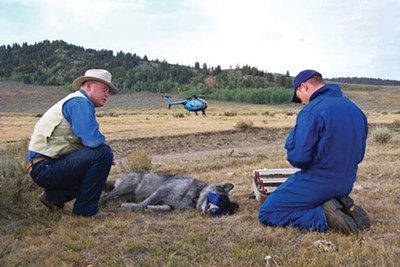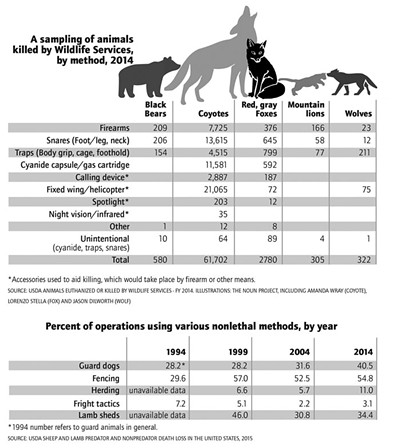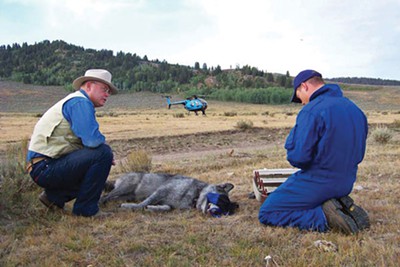
The verb that people most often associate with coyotes is “howl,” though it fails to capture Canis latrans’ vocal spectrum. Wolves howl. Coyotes also yip, squawk, whine, bray, bark, wail and croon. First one starts—motivated by changing barometric pressure or its neighbor’s insolent gaze or who knows what—and another joins in, and another, and soon a discordant chorus hollers skyward, voices melding into an eerie drone. And then one coyote drops out, and another, and the aural tapestry unravels to a single thread until the original soloist, too, tapers off. And then it’s silent on the steppe.

So it sounds at the Predator Research Facility in Millville, Utah, when I visit Julie Young, the wildlife biologist who directs the station. The 165-acre compound, which houses 100 coyotes in fenced enclosures, is operated by the National Wildlife Research Center, the scientific arm of an agency called Wildlife Services. If you’re well acquainted with Wildlife Services, a branch of the U.S. Department of Agriculture, you’re likely a rancher who relies on the agency, or a conservationist who despises it. Otherwise, you may have only a vague idea that an army of trappers has used your tax dollars to kill millions of animals every year for most of the past century.
Wildlife Services overwhelmingly targets invasive species and nuisance birds: Over 40 percent of its 2.7 million kills in 2014 were European starlings. But it’s the slaughter of native predators—mostly to defend livestock and revenue-generating game animals like deer, often on public land—that outrages environmentalists. In 2014, Wildlife Services exterminated 796 bobcats, 322 wolves, 580 black bears, 305 cougars and 1,186 red foxes. And that’s nothing compared to coyotes. That year, the agency killed 61,702, one coyote every eight and a half minutes.
That bloody reputation notwithstanding, scientists at the agency’s Predator Research Facility have spent decades considering more peaceful deterrents: guard dogs, electric fencing, motion-activated alarms and strings of flags, called fladry, that confuse carnivores. Researchers also study coyote behavior—how dominants and submissives interact, how individuals learn from neighbors, how they defend territory. Young and I talk inside an observation tower that stands, panopticon-like, near the facility’s center. Below us, pairs of coyotes pace wedge-shaped pens. No two animals look alike—we see rust-tinged foxy ones, robust wolfish ones, scrawny piebalds. One lopes clockwise around its pen; two more jog along a fence line, like mirror images. A coyote trots to the tower’s base and stares up, watching the watchers.
The coyotes have proven too smart to let humans observe them.
“They know when you’re in here, and no matter how long you sit, some never behave normally,” says Young. “We’ve tried having three people walk in and two walk out. But coyotes can count.”
Now Young uses the room to set up video cameras. The coyotes haven’t figured out they’re being recorded, yet.
After Julie Young and I leave the tower, we drive to the Predator Research Facility’s equipment shed, where jumbled tractors and ATVs await repair. Bouquets of retired traps dangle from pegs on one wall, jaws aglint. “Most of these designs don’t get used anymore,” Young says. But some do: She hoists one metal apparatus, its padded mouth snapped tight. “These are still the main traps for wolves: the long-spring.”
After collecting her doctorate studying coyote territoriality at Utah State, Young spent two years with the Wildlife Conservation Society, researching saiga, an endangered antelope, in Mongolia and examining drilling’s impacts on pronghorn in Wyoming. A scientist with those conservation credentials might seem a strange fit for an agency despised by conservationists. But when I ask about that apparent contradiction, Young shrugs.
